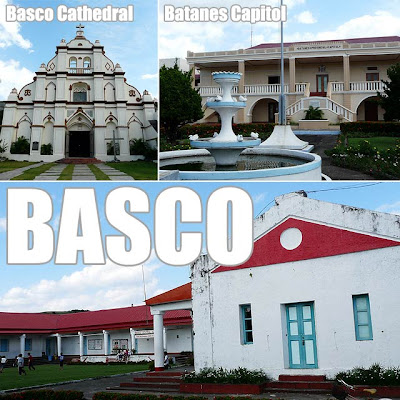 We enjoyed our tour around Basco in the morning and were looking forward to our afternoon tour of the rest of Batan Island. After lunch, we had time to take a quick nap before our driver passed by for us at the hotel for the tour. Make sure you ask your guide to stopover at Mahatao Church which is a National Cultural Treasure.
We enjoyed our tour around Basco in the morning and were looking forward to our afternoon tour of the rest of Batan Island. After lunch, we had time to take a quick nap before our driver passed by for us at the hotel for the tour. Make sure you ask your guide to stopover at Mahatao Church which is a National Cultural Treasure.According to the National Commission for Culture and the Arts (NCCA), “ The church was built in the 19th century by the Dominicans and characterized by a stone structure in the courtyard used to house the beaterio, a local institution to assist in the work of the church. Elsewhere in the churchyard are stone monuments used perhaps as guiding lights for fishermen. The entire site gives a good idea of the simplicity of missionary life (as a counter-balance to the ‘baroque’ sensitiveness of more affluent areas).”
 A staple of these island tours of Batan is Rakuh a Payaman commonly known as Marlboro Country. It’s one of the best views in Batanes, with cows and carabaos grazing, rolling hills, waves crashing on the shore, with a view of another quaint lighthouse built in the distinct Batanes style. I could imagine how charming and romantic it would be to organize a picnic here. One could stay here the whole day just thinking about nothing, savor the scenery and pass the time away.
A staple of these island tours of Batan is Rakuh a Payaman commonly known as Marlboro Country. It’s one of the best views in Batanes, with cows and carabaos grazing, rolling hills, waves crashing on the shore, with a view of another quaint lighthouse built in the distinct Batanes style. I could imagine how charming and romantic it would be to organize a picnic here. One could stay here the whole day just thinking about nothing, savor the scenery and pass the time away. There are more stopovers in Uyugan town, of views of waves crashing on the jagged Batanes cliffs in Dekey a Kanayan, of old stone houses in Barangay Itbud and the poblacion of Uyugan. The next town, Ivana, is home to the very popular Honesty Café where people pay for drinks and snacks they consume on an honesty system since the store is unmanned. Another popular stop in the town is the House of Dakay, said to be the oldest stone house in the town. You’ll get to meet its lone inhabitant, Lola Florestida Estrella who warmly welcomes visitors into her humble home.
There are more stopovers in Uyugan town, of views of waves crashing on the jagged Batanes cliffs in Dekey a Kanayan, of old stone houses in Barangay Itbud and the poblacion of Uyugan. The next town, Ivana, is home to the very popular Honesty Café where people pay for drinks and snacks they consume on an honesty system since the store is unmanned. Another popular stop in the town is the House of Dakay, said to be the oldest stone house in the town. You’ll get to meet its lone inhabitant, Lola Florestida Estrella who warmly welcomes visitors into her humble home. We were lucky to meet former Education secretary Butch Abad on the plane to Basco and he had extended to us an invitation to visit his late sister’s former studio, Fundacion Pacita, which had been converted into a wonderful bed and breakfast in, no doubt, the classiest and most charming accommodation in Batanes.
We were lucky to meet former Education secretary Butch Abad on the plane to Basco and he had extended to us an invitation to visit his late sister’s former studio, Fundacion Pacita, which had been converted into a wonderful bed and breakfast in, no doubt, the classiest and most charming accommodation in Batanes.At PHP7500 a night for a regular room, you’ll never go wrong with its breathtaking views worth dying for especially when you wake up in the mornings. They even have a honeymoon suite for lovebirds looking for a romantic vacation in picturesque Batanes. But be sure to book early since I was told bookings for summer were already in as early as November!
We had dinner and called it a night early since we had to wake up the next day for our trip to Sabtang.
Fundacion Pacita Batanes Nature Lodge
(0917) 7958153
Part 1: Batanes, undiscovered paradise up north
Part 3: Batanes stone houses in Savidug and Chavayan, Nakabuang Beach and more from Sabtang Island
Part 4: Batanes hotels and restaurants plus exploring Batanes by bike













